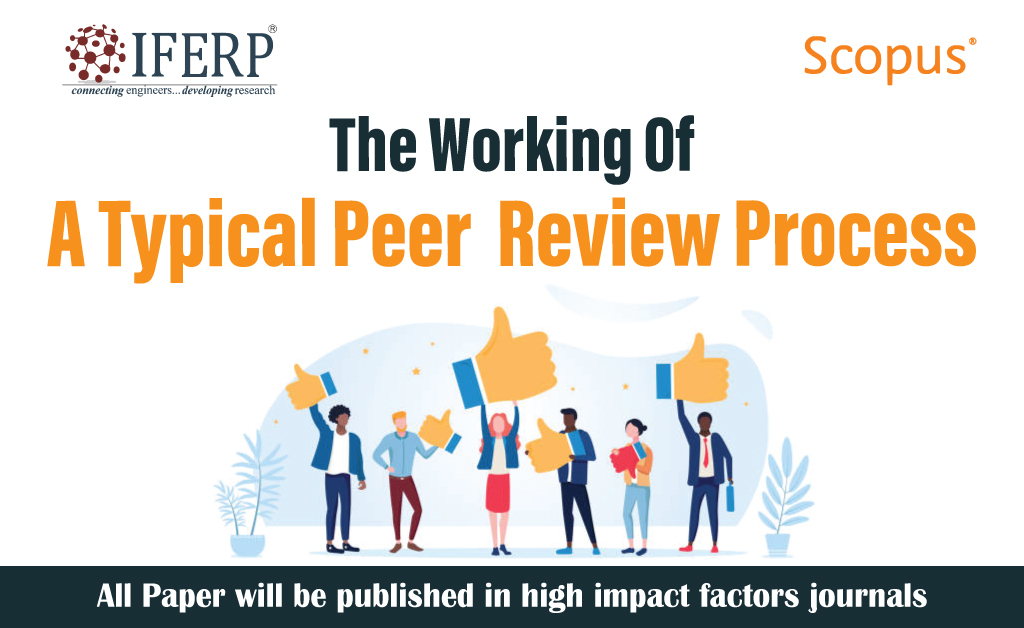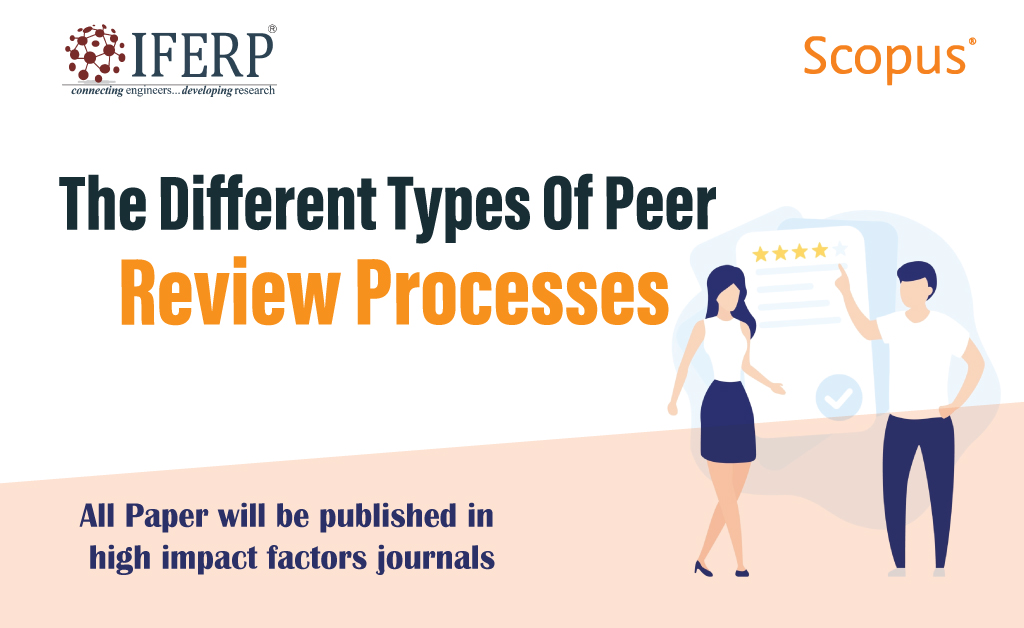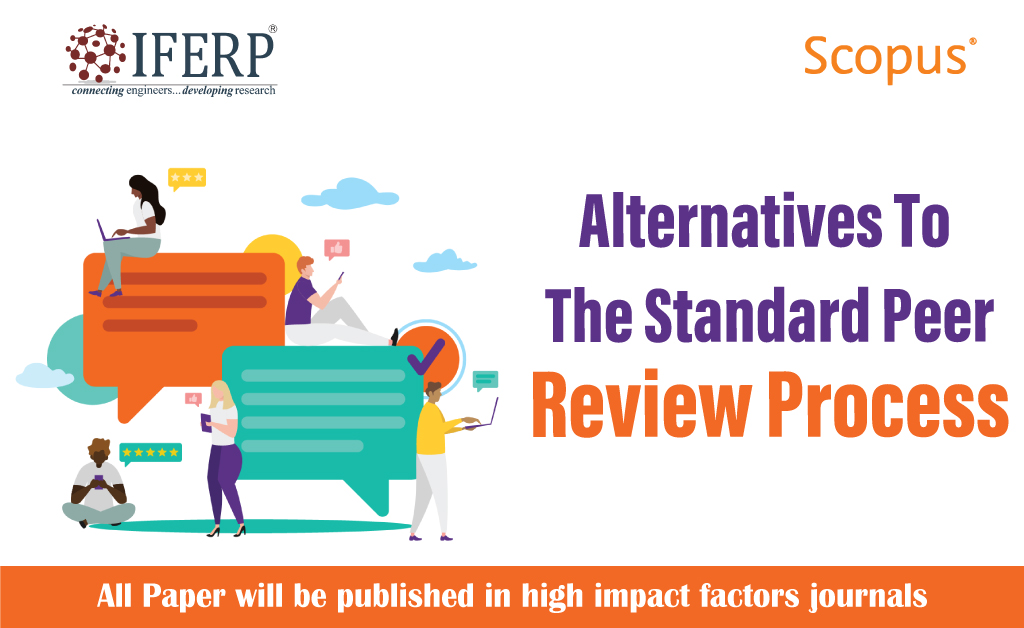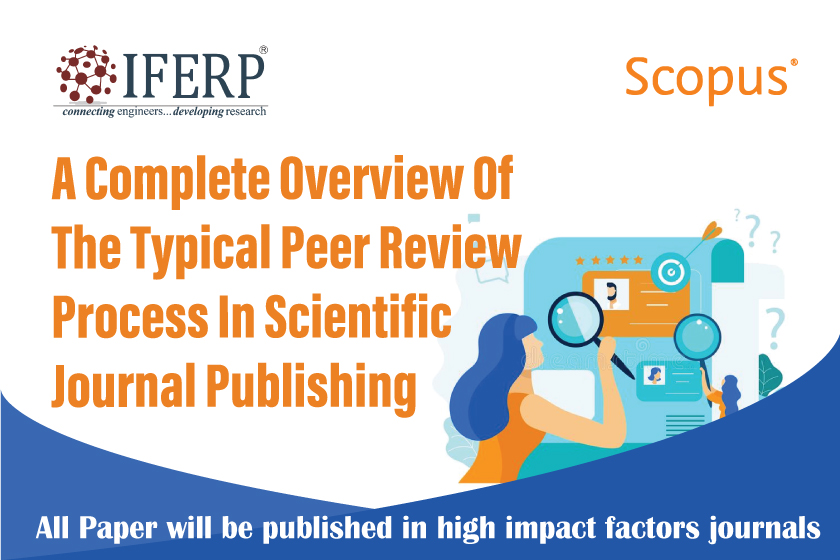What’s The Significance Of The Peer Review Process?
- Scientific research findings and discoveries can have far-reaching implications for individuals and society.
- This is partly why they go through a quality control process called “peer review” before they are published.
- Peer review entails subjecting the author’s scientific research and outcomes to the scrutiny of other domain experts to verify its authenticity and validacy as well as evaluate the suitability of the research work for publication and widespread dissemination.
- Peer reviews assist publishers in deciding whether a work should be accepted or not.
- Having scientific manuscripts anonymously reviewed before publication by unbiased experts in the field is an essential tool to verify the quality and help ensure the integrity of scientific findings communicated to the world.
- This goes a long way to preventing erroneous results from being posted and eliminating duplicate submissions.
- Unfortunately (and rarely), authors submit their work to two Scopus indexed journals 2023 simultaneously or try to republish data.
- Publishers rely on our expert reviewers to detect these issues.
- Unfortunately, as most editors know all too well, the peer review process does not completely eliminate these problems, but it remains the best existing tool to manage this as much as possible.
- Peer review is based on the idea that if a researcher’s work is scientifically valid and has merit, impartial colleagues will recognize it.
- It’s the last step in a long validation process that started when a researcher decided to check with their lab colleague if their calculations were correct, when their colleagues reviewed their draft, when the editor read their article and decided to send it for review, and when the referees looked at the work to provide them with feedback to present the best article possible.
- Peer review in scientific journals provides quality control, ensuring that if researchers invest the time and resources to further their research with published papers, they won’t waste eight months of their time.
The Working Of A Typical Peer Review Process
When scholarly work is submitted to a scientific journal, it first undergoes a preliminary check called “desk review”. The editor determines whether the manuscript should be sent for peer review or immediately rejected. The next step is to select experts in the same field who are qualified and able to review the work impartially. Ideally, the work is evaluated by several experts.

The primary objective of a peer reviewing is to –
- determine whether a scientific work falls within the scope of the journal,
- to verify whether the research topic has been distinctly and legibly formulated, and
- to determine whether an appropriate approach has been taken to address the scientific questions involved.
The reviewer also reviews the methodology to determine if the author’s findings can be reproduced, and he or she assesses the novelty and authenticity of the research results. If a work involves patients or animals, peer review will also cover ethical aspects. Finally, the examiner will also assess the “readability” of the work, assessing the logic with which the arguments being made have been constructed and whether the conclusions are well-founded. In addition, the author of a research article will usually receive useful tips to enhance their work. The individual steps involved in a typical peer review process are highlighted below. Participating in an international conference in 2023 will help you learn more about this topic.
- Step #1
Editor Selection
- The manuscript will first go through a first selection by an editor.
- At this first stage, the editor of a journal will determine if it is suitable for the journal and if there are any fundamental flaws.
- If the editor believes that the manuscript has serious problems or is not relevant to the scope and purpose of the journal, the manuscript will be rejected without any external review, and the authors will be notified of the same.
- If the manuscript passes the editor’s preliminary screening, it is sent for review to external reviewers.
- Step #2
Peer review
- Now that the article has passed the editor’s pre-review, it will be forwarded to reviewers.
- Usually, about two to four reviewers are invited to assess the work, but the number of reviewers may differ depending on the field of study.
- Reviewers have to be experts in the relevant discipline.
- Each reviewer will review and offer his/her comments on the manuscript.
- The journal may have its specific review guidelines, but reviewers will consider the importance of the study, study design, presentation of results, clarity of language, etc.
- Reviewers will also pass on their recommendations to the journal editor regarding publication.
- Based on the reviewers’ comments and suggestions, the editor will make an informed decision as to whether the article will be accepted, rejected, or invited to revise and resubmit.
- The editor will send the decision letter to the authors.
- It is extremely rare for an article to be accepted as is.
- If authors are asked to revise and resubmit the article, they proceed to the third stage of the process.
- Get updates on every upcoming virtual conference in 2023, where you’ll be able to learn more about the peer-review process from real-life peer reviewers.
- Step #3
- Revise & Resubmit
- In this case, the editors of journals believe that the article contains important information, but some issues or concerns need to be addressed.
- Authors should carefully read and consider reviewers’ comments.
- Revision should be based on these comments.
- Authors should also respond point-by-point to each comment indicating how the change was made, or if some revisions cannot be made, they politely provide sufficient explanation.
- Authors should follow the editor’s instructions on how to display the revision (e.g., highlight changes, use Microsoft Word Track Change).
- Once the review is complete, the authors resubmit the revised article to the journal.
- The revision will be reviewed by the editor only or by both the editor and reviewers for the second round.
- Then the authors can usually get a final decision.
- Normally, if the editor and reviewers feel that the review has adequately addressed their previous concerns and the article has improved after the review, the article will proceed to the final stage.
- Step #4
Acceptance
- When the article is accepted, the authors receive a letter of acceptance. Authors may be asked to complete certain documents as a condition of publication.
- The manuscript will be corrected and then put into production.
- Peer reviewers usually offer their assessment in the form of questionnaires that they return to their editors.
- This forms the foundation for deciding whether the work should be –
- accepted,
- considered acceptable with revisions, or
- rejected entirely.
- Submissions with serious deficiencies will be rejected, although they may be resubmitted once they have been carefully reviewed.
- In principle, publishers have the final say on how many review reports they get and how well they follow the recommendations in them.
- Attend an upcoming international conference in 2023 to find out how peer reviewers go about making their decisions.
- If a work is rejected, it does not necessarily mean that it is of poor quality.
- An article may also be rejected because it falls outside the journal’s area of specialization or because it does not meet the high-quality standards of novelty and originality necessitated by a given journal.
- Another reason for research papers being rejected is if reviewers disagree that the author’s approach is innovative.
- There are also journals that take a more relaxed stance on originality and concentrate more on the extent to which authors have followed proper scientific research methodologies.
- It is, therefore, quite common for authors to submit their articles to another journal after receiving a rejection.
- Some prestigious journals reject more than ninety percent of the articles submitted to them, while the rejection rate in all scientific journals is around fifty percent.
- If an article is rejected, the authors generally submit it to another journal.
- Whether resubmission to the same journal is possible is stated in the respective journal policy and should be discussed with the editor if required.
The Value Of Peer Reviewing
- Without peer review, scientific research articles, papers, reports, and case studies all have no value. Verification and review are essential to legitimize the results.
- This does not mean that the interpretations are correct or that a given study is flawless, but it does mean that the work has passed some basic level of scrutiny.
- Without peer review, the distinction between objective conclusions and subjective messages becomes indistinguishable.
- Peer reviewing is an irreplaceable mechanism in academic research publication.
- It minimizes the possibility of reporting erroneous results, misinterpretations, and unsubstantiated claims.
- It’s also a powerful tool for maintaining the quality of a journal.
- The peer-review process is essential to the process of disseminating scientific work. Science is, by nature, a process that involves teamwork.
- In the lab, researchers work with other team members to produce new research.
- The peer-review process is an extension of this, where other experts in the author’s field step in to produce the best possible article.
- Peer review in scientific journals also provides quality control so that readers of the journal know they are reading reliable results.
- Register and participate in a 2023 engineering and technology conference for more information on the value and significance of the peer review process in scientific publishing.

The Different Types Of Peer Review Processes
The term peer review, as a matter of fact, encompasses a number of different approaches, the most common of which are –
- Single-Blind Peer Review
- Single-blind peer reviews are typically characterized by the fact that the names of reviewers are hidden from the authors.
- Double-Blind Peer Review
- Double-blind peer reviews are typically characterized by the following –
- Authors and reviewers and remain unknown to each other.
- Additionally, there are considerable differences in the level of detail with which items are assessed.
- For instance, some journals –
- make additional use of anti-plagiarism software, organize separate reviews of author methods and statistics, or
- review submitted illustrations to determine whether they have been manipulated.
- There are also an increasing number of journals that focus on scientific software or research datasets, and the peer review process has also been adapted to accommodate these contexts.
- Double-blind peer reviews are typically characterized by the following –
- Conferencing Peer Reviews
- The peer-review process is also used by conference organizers to select contributions for inclusion in their program.
- Funding Agency Peer Reviews
- Funding agencies even use peer review methods to assess the eligibility of research proposals for funding.
Some Drawbacks Of The Peer Review Process
- Reviewer Bias
- All the methods mentioned above have their pros and cons.
- For instance, critics of the double-blind method argue that reviewers can guess who the authors are by looking at the references they cite.
- They suggest this could undermine their neutral stance.
- The evaluation of an academic article is also affected by the scientific beliefs of the reviewer and the care and effort they choose to invest in the process.
- Shoddy Reviewals
- Peer review has recently come under major criticism following instances where reviewers failed to spot serious errors in the author’s methodology.
- Some reasons for the ‘failures’ of the peer review process include –
- the heavy workload of reviewers (as more articles are published), and
- poor selection of reviewers by editorial boards.
- Lack Of Transparency
- Another frequently raised objection is that peer review is not sufficiently transparent, not only because reviews are inevitably subjective (particularly if reviewers are incapable of adequately separating themselves from their particular schools of thought) but also because evaluators may not appreciate the value of novel ideas or might withhold – or may simply not be asked to offer – relevant conflict of interest information.
- Unnecessarily Long-Drawn Processes
- Another pivotal criticism of peer review is that the process can stretch over a long period of time, usually weeks or months, but sometimes even years.
- Hasty Reviewals
- Some also suspect that journals that claim to have peer review in place are actually doing very cursory reviews, if at all.
- This is most common amongst predatory journals whose sole purpose is not the widespread dissemination of novel scientific data and research findings for the good of mankind and the furtherance of scientific progress but to accelerate revenue generated through multiplying subscriptions to their sub-par journal publications.
It is conventionally accepted that peer review cannot completely eliminate cases of fraud and the publication of poor-quality articles. Nevertheless, peer review continues to be favored despite all criticism because it has finally proven itself and exhibited that, in most cases, it can help enhance the quality of publications – especially if authors can consult the report and work on the comments. In the end, nevertheless, the responsibility lies with the authors, who are required to show rigor, probity, and scientific reproducibility within the framework of the scientific process. The concept of peer review is also constantly being adapted to counter criticism such as the points mentioned above.
Alternatives To The Standard Peer Review Process
The variations described above are all forms of pre-publication peer review, in which an article is peer-reviewed before official publication. However, efforts are also being made to experiment with different alternatives in the hope that these can address some of the criticisms mentioned above –

- Open Peer Reviewing
- Open peer review (or participatory peer review) is a collective term for various methods that seek to open up the peer review process, for example, by revealing the identity of authors and peer reviewers or even by providing access to the exams themselves.
- Post-Publication Peer Reviewing
- Post-publication peer review is an umbrella term for all forms of feedback and commentary on an article that takes place after publication.
- It can therefore be combined with an open peer review.
- The fundamental idea is to publish a manuscript after no more than a superficial preliminary review – or absolutely no review at all – and leave the corresponding evaluation and appreciation to the scientific community.
- Additionally, post-publication peer review usually allows people to post comments and reactions to articles that have already been published.
- These comments are posted as part of a formal process, either on the publishing platform or on external platforms like PubPeer.
- Transparent Peer Reviewing
- In the transparent peer review process, reviewers are aware of the names of authors, but authors aren’t aware of who reviewed their manuscript unless the reviewer chooses to sign their report.
- If the manuscript is accepted, anonymous reviewers’ reports are published with the article and the authors’ response to the reviewer.
- Cascading & Portable Peer Reviews
- Alternatives include redirecting rejected manuscripts to another possibly more appropriate journal along with the review reports, thereby shortening the subsequent peer-review process.
- This is usually called cascading peer review when the manuscript is forwarded to other journals belonging to the same publisher or “portable peer review” when manuscripts along with their peer review reports are also sent to a different publisher.
- The goal is to avoid unnecessary, duplicative editing efforts.
- A similar methodology is adopted by the Review Commons platform, an initiative that works in affiliation with a collective of life science journals.
- The Review Commons platform makes manuscripts available on a preprint server prior to submission to a journal, where they can be peer-reviewed autonomously of any specific journal.
- Authors then use the peer review reports as the foundation for determining which of the participating journals is the most suitable for their manuscript.
- They then submit it to the journal along with the peer review reports.
All of these alternatives seek to solve specific problems of the peer review process, but some of them may also raise distinct challenges of their own.
Informal Methods Of Obtaining Feedback
- Another option is to seek informal comments on a manuscript, a process that is usually initiated by authors themselves.
- One possibility is to just send the manuscript to colleagues and ask them for their opinion; another involves uploading the manuscript to a preprint server and sharing the link via a blog, email, or social media channels like Twitter.
- The benefit of going for this approach is that the author can quickly get feedback on their manuscript before submitting it.
- The downside is that authors can never be sure that their manuscripts have been carefully reviewed, and the advice and feedback they receive may offer little help in improving the manuscript.
- Moreover, this approach is not recognized as a valid form of peer review in the strictest sense of the word.
Rapid Peer Review or Accelerated Peer Review
- The traditional peer review process usually takes weeks or months.
- Some life science journals have now introduced an accelerated peer review process for submissions on specific topics, for example, those related to public health.
- This “fast track” process followed by fast publishing Scopus journals relies on a pool of reviewers who have agreed to provide faster reviews while maintaining the same level of rigor.
- This expedited process provides the fastest possible access to scientific findings in the relevant field without compromising quality assurance.
- In order to find out if a journal offers this service, it is recommended that authors peruse the website of the journal and watch out for any mentions of this.
Recognizing Peer Reviewing As A Service
- Typically, peer reviewers are not compensated for their work, as peer review is an integral part of the scientific process.
- Some publishers “reward” their reviewers with free access to the publisher’s archives for a limited time.
- Peer reviewers can even enhance the visibility of the services they provide by using platforms such as Publons, which give researchers the opportunity to showcase their contributions to the scientific quality assurance process.
- Publons makes it possible for researchers to indicate the number of manuscripts they have peer-reviewed for each journal.
- However, the peer review reports themselves may only be viewed if the journal has an open peer review process in place and the authors and reviewers consent to their publication.
- Researchers can also reference their peer review activities on their CVs.
How To Become A Peer Reviewer
- In order to evaluate manuscripts from other researchers, you need some expertise in the field.
- Editors mostly get to know potential reviewers through publications or conferences.
- Additionally, major publishers also maintain reviewer databases that contain each person’s specialist areas and contact info.
- Some journals even allow authors to recommend reviewers when submitting their manuscripts.
- This makes the editors’ jobs easier, and they aren’t obligated to accept such suggestions.
How Many Peer Reviews Should A Peer Reviewer Write?
- There is no state answer to this query as it largely depends on each individual’s available interests, resources, and abilities.
- As a general rule, academics should strive to write as many peer reviews as they have received for their own work.
Peer Reviews & Good Research Practices
- Since peer reviews are an integral part of the scientific publication process, it is also subject to the rules of good research practice.
- This implies that applicants are required to disclose any lack of expertise or possible conflicts of interest to the Editorial Board.
- This also means that any manipulation of the peer review process or the submission of incorrect or discriminatory peer review reports is considered scientific misconduct.
The Necessity Of The Peer Review Process, In A Nutshell
Peer review is a crucial part of scientific publication that affirms the validity of the manuscript. Peer reviewers are domain experts who volunteer their time to assist in improving the manuscripts they review. By virtue of being subject to the peer review process, manuscripts become –
- More Robust
Peer reviewers can point out gaps in an article that require more explanation or additional experience.
- Easier To Read & Comprehend
If parts of a research author’s article are difficult to understand, reviewers can suggest edits.
- More Helpful
Peer reviewers also consider how important an author’s article is to others in their field.
Download the IFERP App to read up on more insightful and informative blogs such as this one.


